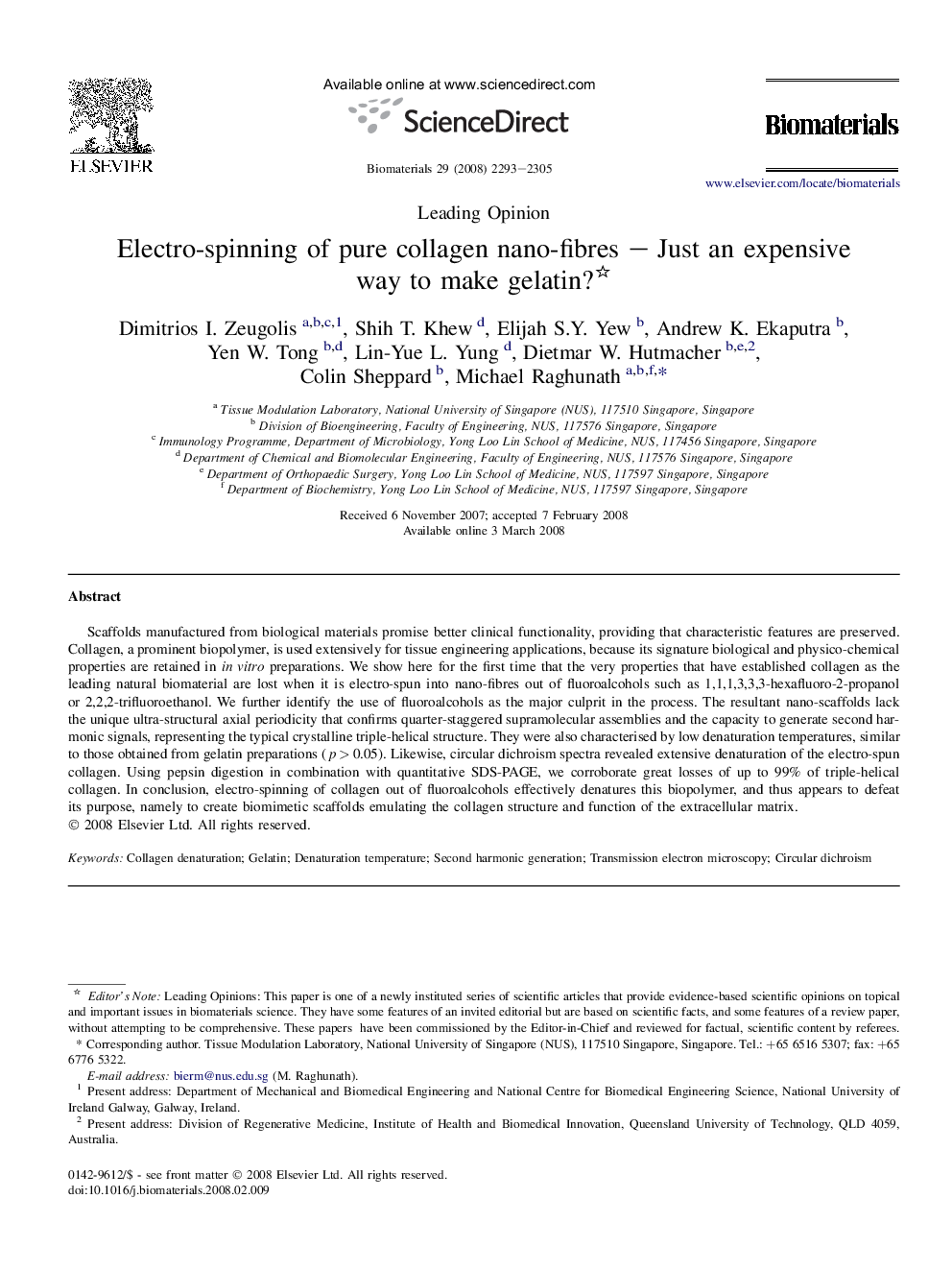| Article ID | Journal | Published Year | Pages | File Type |
|---|---|---|---|---|
| 10118 | Biomaterials | 2008 | 13 Pages |
Scaffolds manufactured from biological materials promise better clinical functionality, providing that characteristic features are preserved. Collagen, a prominent biopolymer, is used extensively for tissue engineering applications, because its signature biological and physico-chemical properties are retained in in vitro preparations. We show here for the first time that the very properties that have established collagen as the leading natural biomaterial are lost when it is electro-spun into nano-fibres out of fluoroalcohols such as 1,1,1,3,3,3-hexafluoro-2-propanol or 2,2,2-trifluoroethanol. We further identify the use of fluoroalcohols as the major culprit in the process. The resultant nano-scaffolds lack the unique ultra-structural axial periodicity that confirms quarter-staggered supramolecular assemblies and the capacity to generate second harmonic signals, representing the typical crystalline triple-helical structure. They were also characterised by low denaturation temperatures, similar to those obtained from gelatin preparations (p > 0.05). Likewise, circular dichroism spectra revealed extensive denaturation of the electro-spun collagen. Using pepsin digestion in combination with quantitative SDS-PAGE, we corroborate great losses of up to 99% of triple-helical collagen. In conclusion, electro-spinning of collagen out of fluoroalcohols effectively denatures this biopolymer, and thus appears to defeat its purpose, namely to create biomimetic scaffolds emulating the collagen structure and function of the extracellular matrix.
